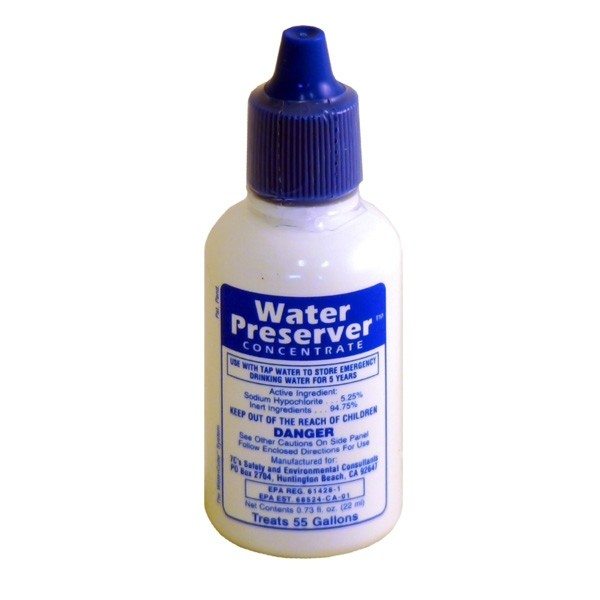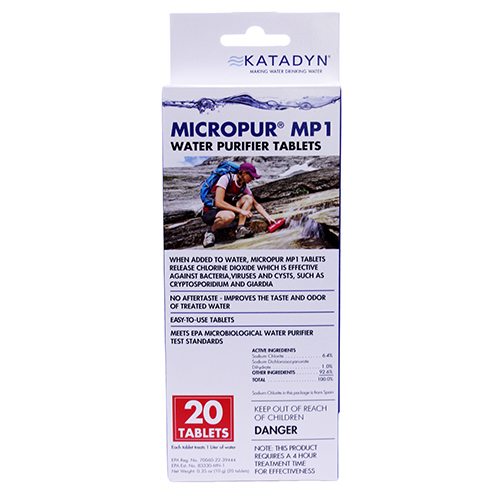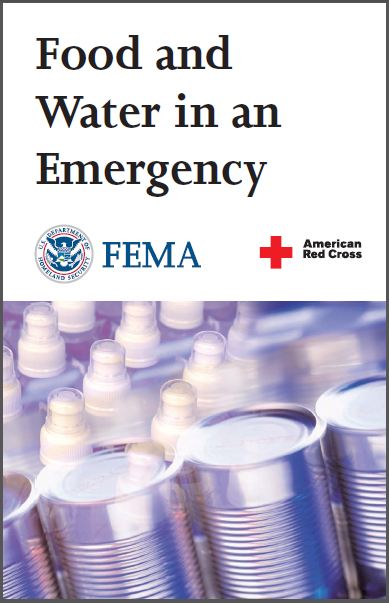How to store water
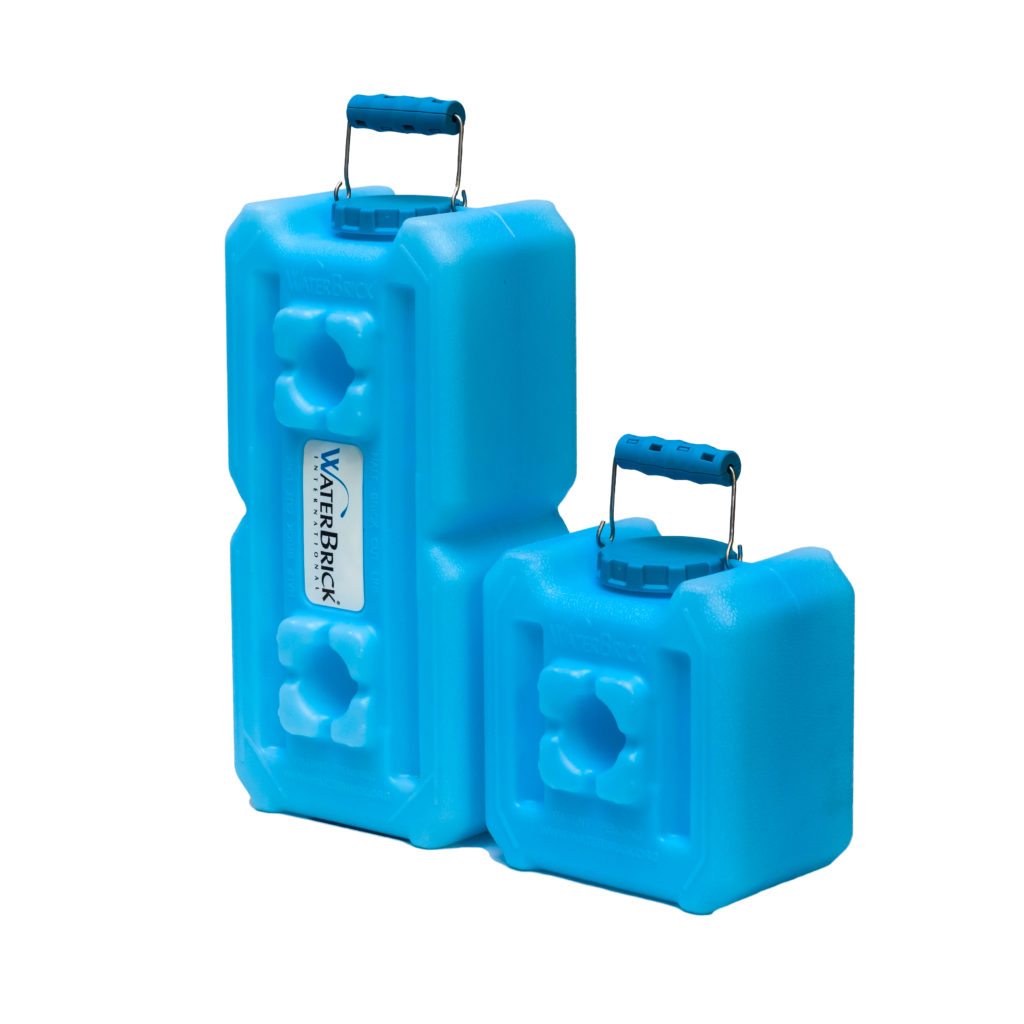
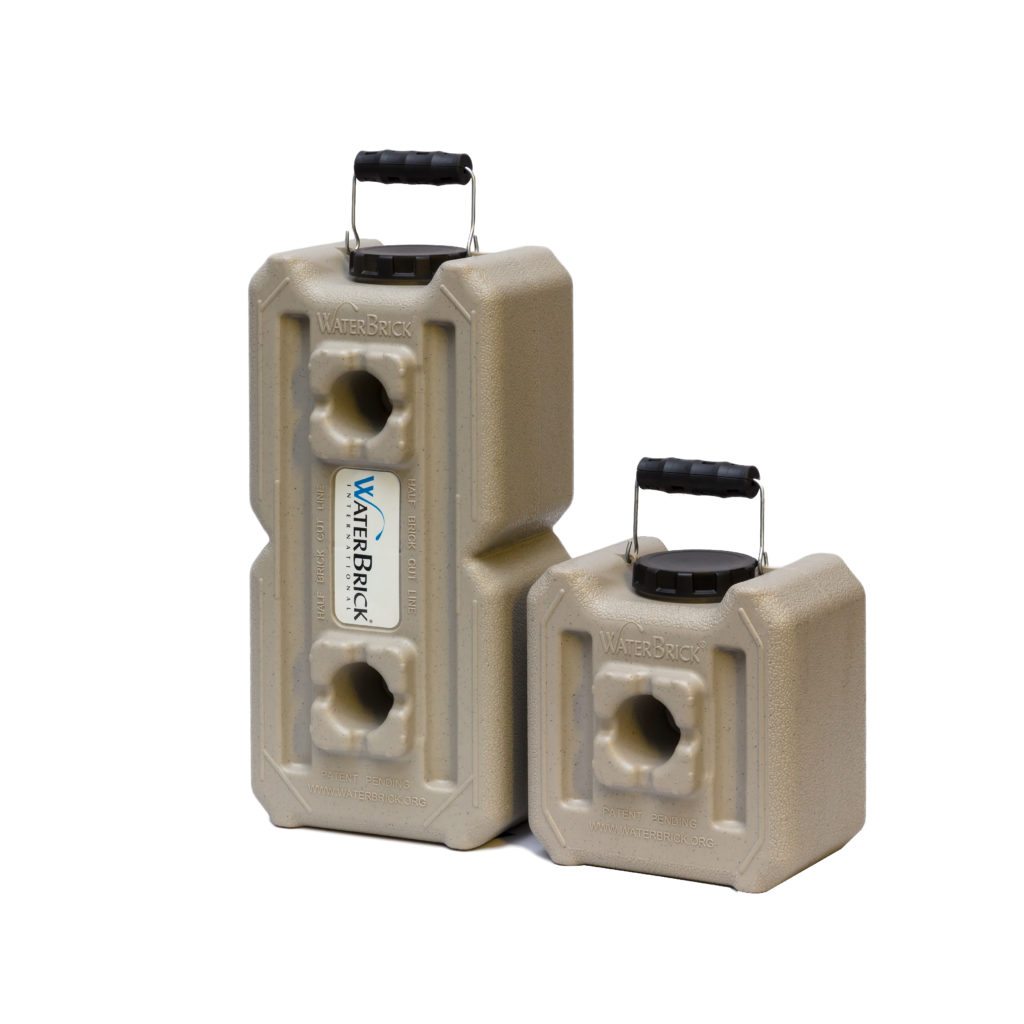
Preparing Containers
Filling Water Containers
Unsafe Water Sources
Emergency Outdoor Water Sources
Water Filters
Water Treatment Preservers
Water Purification Tablets
How Much Water Do I Need?
Minimum: 1 Gallon of Water per Person per Day
A normally active person needs at least one gallon of water daily just for drinking. However, individual needs vary depending on age, physical condition, activity, diet and climate.
For a typical family of four, a two week supply of water would require 56 gallons of water minimum.
According to FamilySurvivalPlanning.com, “In addition to drinking water, you will need 1/2 gallon per person per day for other uses, such as brushing teeth, washing dishes, etc. So 1 gallon per person per day is the bare minimum. On a regular day, you may wash several gallons of water down the drain as you rinse the dinner dishes. In an emergency situation, you will have to keep a watchful eye on the amount used for those purposes. A wet cloth wipe-up may be all your dishes get.
One gallon per person per day is a good general starting amount, but you may need more than that. Take into consideration the specific needs of your family.
- If the majority of your storage foods are dry or dehydrated, you’ll need more water for preparation of those foods.
- Do you have pets? If so, you’ll need to plan additional water for them.
- Do you have a baby in your house? How much water do you need for preparing formula or baby food? Since babies sometimes spit up and make messes, you’ll need sufficient water to clean up.
- Active teenagers usually drink more liquids than adults. Make sure to store plenty of water for active teens.
- Is any member of your family an invalid or chronically ill? Do they have an increased need for water to take medications or for personal care?
- Do you live in an area where extreme heat is a regular occurrence? Everyone will need more water if that is your situation.
- Are you accustomed to drinking more water for good health? If so, cutting back drastically, especially in a time of crisis, could be very difficult physically.”
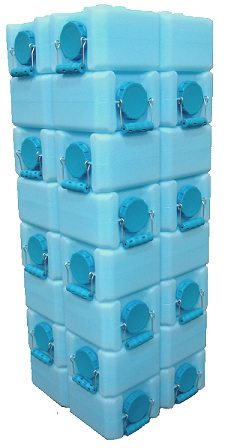
16 Std. WaterBricks = 56 Gal.
Floor Space Used = 18″ x 18″
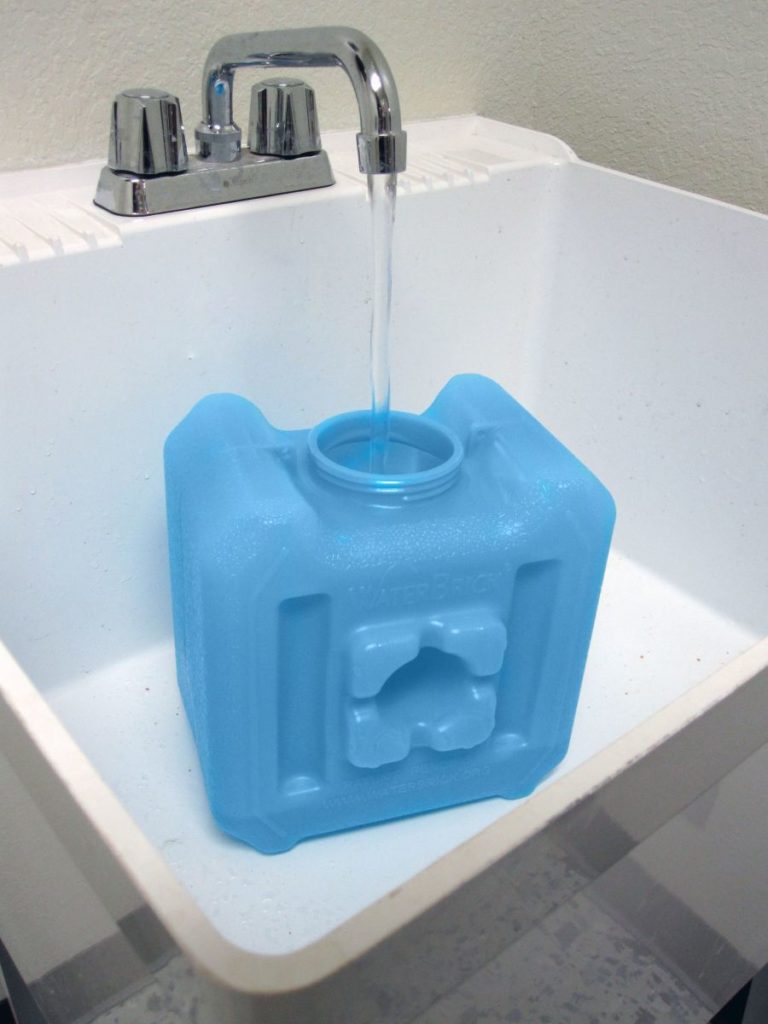

How Should I Store Water?
It is recommended you purchase food grade water storage containers from surplus or camping supplies stores to use for water storage.
Preparing Containers:
Before filling with water, thoroughly clean the containers with dishwashing soap and water and rinse completely so there is no residual soap. Sanitize the containers by adding a quarter cup of bleach with one cup of water. Mix the sanitizing solution in the container so that it touches all surfaces. After sanitizing the bottle, thoroughly rinse out the sanitizing solution with clean water.
Filling Water Containers:
- Fill the bottle to the top with regular tap water. (If your water utility company treats your tap water with chlorine, you do not need to add anything else to the water to keep it clean.)
If the water you are using comes from a well or water source that is
not treated with chlorine, add two drops of non-scented
liquid household chlorine bleach to each gallon of water.
- Tightly close the container using the original cap. Be careful not to contaminate the cap by touching the inside of it with your fingers. Write the date on the outside of the container so that you know when you filled it. Store in a cool, dark place.
- Replace the water every six months if not using commercially bottled water or a water preserver.
What are some Water Sources?
Unsafe Sources:
- Radiators or hot water boilers (home heating systems)
- Water from the toilet bowl or flush tank
- Water beds – Fungicides added to the water or chemicals in the vinyl may make the water unsafe to use.
- Swimming pools and spas – Chemicals used to kill germs are too concentrated for safe drinking but can be used for personal hygiene, cleaning and other related uses.
Emergency Outdoor Water Sources:
If you need to find water outside your home, you can use these sources. Containers like WaterBrick allow you to easily and more efficiently collect water from these outdoor sources. Be sure to treat the outdoor water before drinking it.
- Rainwater
- Streams, rivers, and other moving bodies of water
- Ponds and lakes
- Natural springs
Avoid water with floating material, an odor, or dark color.
Use saltwater only if you distill it first. You should never drink flood water.
How Do I Treat the Water?
If you have used all of your stored water and there are no other reliable clean water sources, it may become necessary in an emergency situation to treat suspicious water. Treat all water of uncertain quality before using it for drinking, food washing or preparation, washing dishes, brushing teeth or making ice.
In addition to having a bad odor and taste, contaminated water can contain microorganisms (germs)
that cause diseases such as dysentery, cholera, typhoid and hepatitis.
There are many ways to treat water. None is perfect. Often the best solution is a combination of methods. Make sure you have the necessary materials in your disaster supplies kit for the chosen water treatment method.
Before treating, let any suspended particles settle to the bottom or strain them through coffee filters or layers of clean cloth.
Katadyne – They have many filters that can be used in combination with water containers like WaterBrick.
Water Treatment Preservers:
Water Preserver – Treats 50-55 gallons of water. EPA approved. The water will remain crisp and fresh for up to 5 years. No need to rotate the stored water every 6 months if a water treatment preserver is added
Water Purification Tablets:
Katadyne MicroPur Tablets – The Only EPA Registered Purification Tablets on the Market! And the only disinfection system effective against viruses, bacteria, cryptosporidium, and Giardia. No unpleasant taste.
Biofilm Problems?
Black or yellow deposits on your gaskets are inherent in your water supply.
Your gaskets can be cleaned by removing the gaskets, placing in a bowl of water with some unscented bleach to soak for a few minutes. Then, using dish soap, lightly clean off any excess residue and rinse with hot water. Replace gasket in cap making sure that the “flat” side of the gasket faces inbound and the little rubber lip is facing toward you once installed.
For more info about Biofilm in your water supply see:
Other Treatment Methods:
For other information on water treatment methods, go to page 11 of FEMA’s Food and Water in an Emergency Brochure here.
